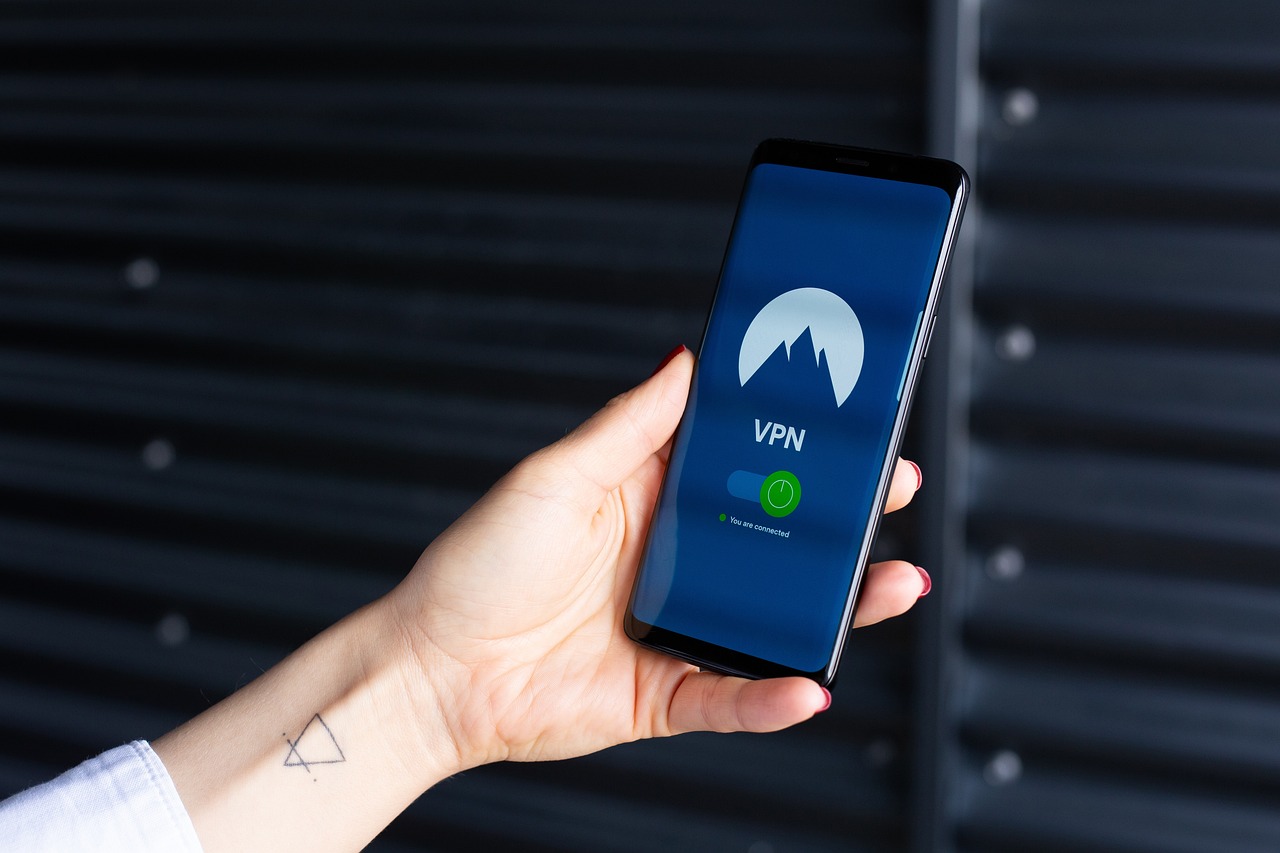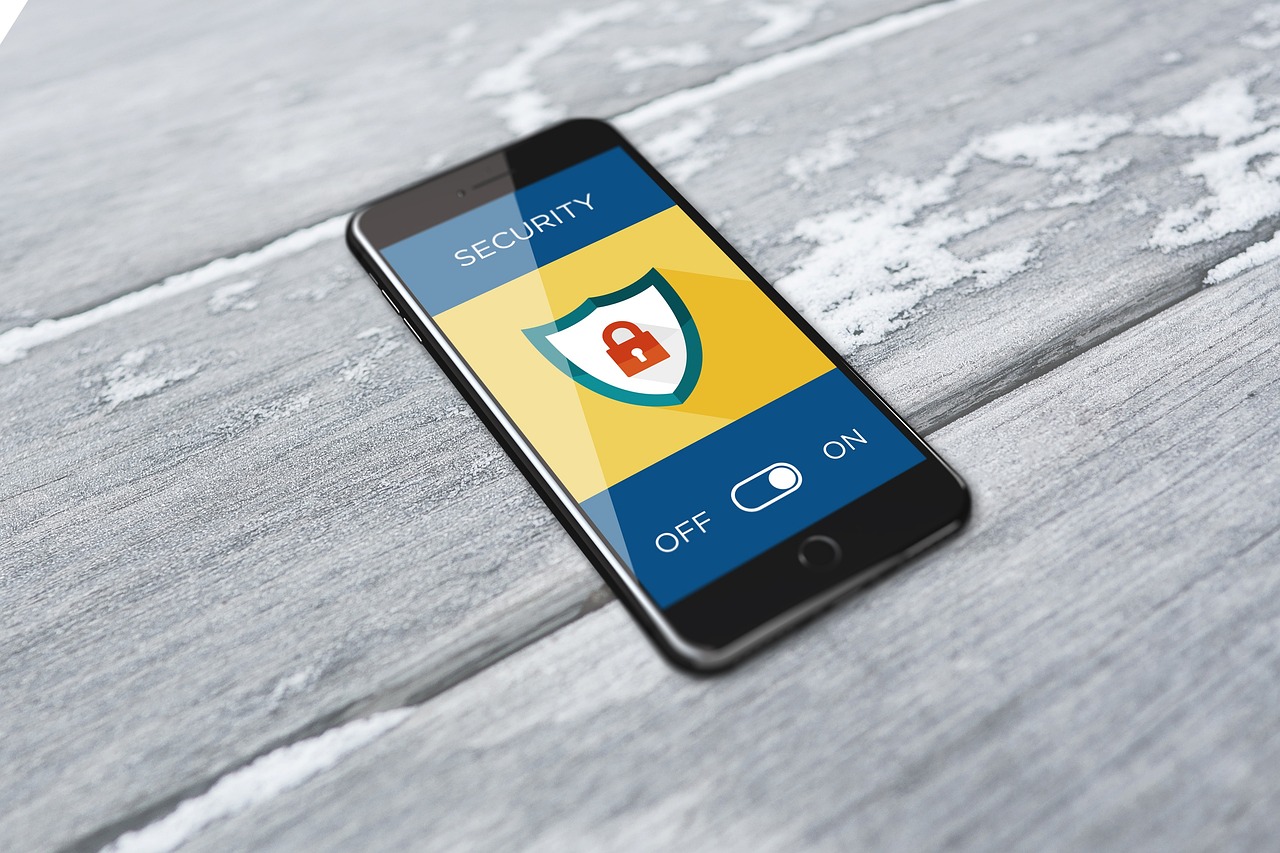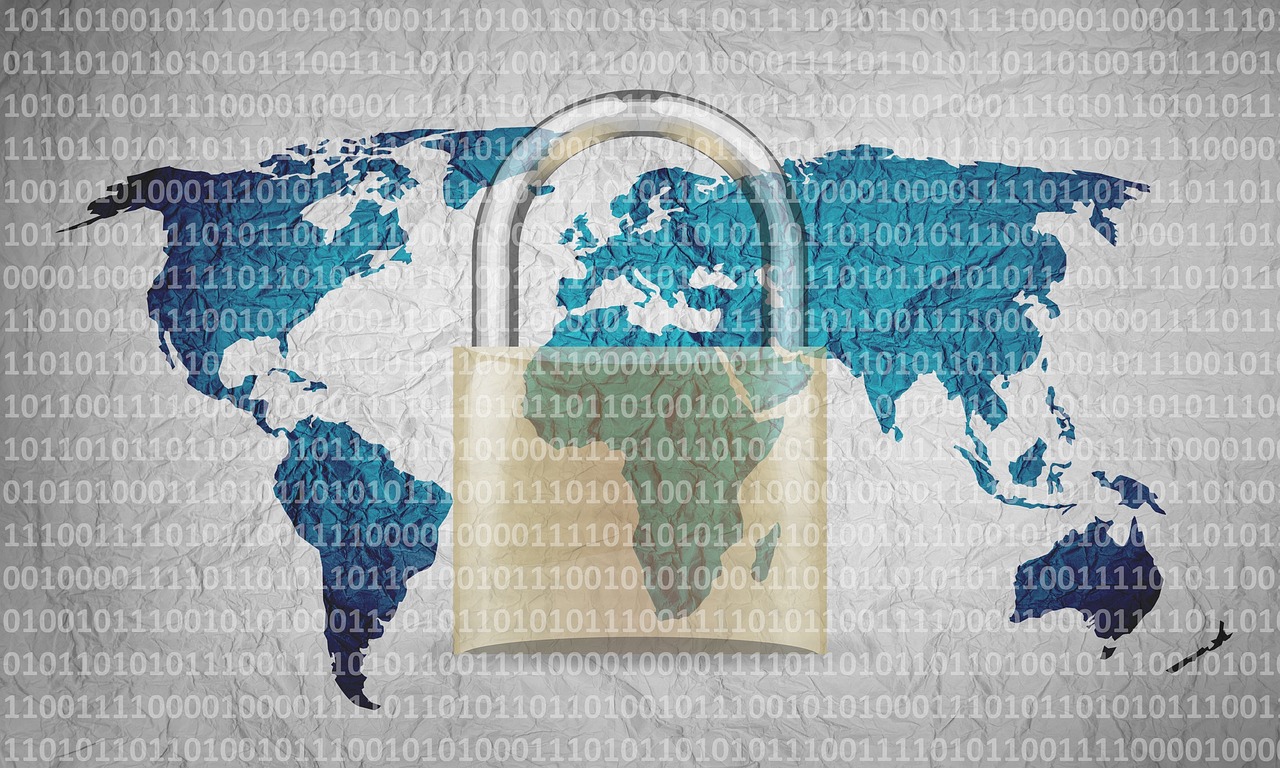How to Boost Your Cybersecurity Systems
In an era where our lives are increasingly intertwined with technology, the importance of robust cybersecurity systems cannot be overstated. Imagine your digital world as a bustling city, filled with valuable assets, from personal data to sensitive business information. Just like any city, it needs strong walls and vigilant guards to protect against threats lurking around every corner. This article explores essential strategies and techniques to enhance your cybersecurity systems, ensuring robust protection against threats and vulnerabilities in today’s digital landscape.
Identifying the various types of cybersecurity risks is crucial for developing effective defenses. The digital landscape is fraught with dangers, and being aware of them is the first step in safeguarding your assets. Common threats include:
- Malware: Malicious software designed to harm or exploit any programmable device or network.
- Phishing: Deceptive attempts to obtain sensitive information by masquerading as a trustworthy entity.
- Insider Attacks: Threats that originate from within the organization, often by employees or contractors.
Each of these risks requires tailored strategies to combat them effectively. By understanding these threats, you can begin to craft a robust cybersecurity framework that not only defends but also anticipates potential attacks.
Creating and enforcing strong password policies is a foundational step in cybersecurity. Think of passwords as the keys to your digital kingdom; weak keys can easily be picked. Best practices for password creation include:
- Using a mix of uppercase and lowercase letters, numbers, and symbols.
- Avoiding easily guessable information, such as birthdays or common words.
- Changing passwords regularly and avoiding reuse across multiple sites.
Moreover, the importance of multi-factor authentication (MFA) cannot be stressed enough. MFA adds an additional layer of security, making it significantly harder for unauthorized users to gain access. It’s like having a second lock on your door—just in case someone manages to pick the first one.
Employee education is vital for minimizing risks. Even the most sophisticated security systems can falter if the human element is overlooked. Regular training and awareness programs empower staff to recognize and respond to security threats effectively. Consider implementing:
- Workshops on identifying phishing attempts.
- Regular updates on the latest cybersecurity threats.
- Simulated attacks to test employee readiness.
By fostering a culture of security awareness, you create a workforce that acts as the first line of defense against cyber threats.
A comprehensive security awareness program can empower employees. Key components of an effective program include:
- Interactive training sessions that engage employees.
- Regular updates on emerging threats and best practices.
- Simulated phishing exercises to reinforce learning.
Such initiatives not only educate but also instill a sense of responsibility among employees, making them active participants in the security process.
Assessing employee engagement in security practices is essential. You can evaluate the effectiveness of training and awareness initiatives through:
- Surveys to gauge understanding and retention of security practices.
- Monitoring incident reports to identify areas of improvement.
- Feedback sessions to discuss challenges faced by employees.
By measuring engagement, you can refine your programs to ensure they meet the needs of your workforce.
Keeping software and systems updated is critical for cybersecurity. Outdated software is like a rusty lock—it may still work, but it’s far more vulnerable to attacks. This section emphasizes the importance of patch management and timely updates to mitigate vulnerabilities. Regular updates ensure that you’re protected against the latest threats and exploits. Establish a routine for checking updates and consider automating the process to eliminate human error.
Leveraging advanced security technologies can significantly enhance protection. Tools like firewalls, intrusion detection systems, and encryption methods are essential components of a strong cybersecurity strategy. Firewalls act as barriers, controlling incoming and outgoing traffic, while intrusion detection systems monitor for suspicious activities. Encryption, on the other hand, ensures that even if data is intercepted, it remains unreadable without the proper keys.
Cloud security is increasingly important as businesses migrate to cloud environments. With the convenience of cloud services comes the responsibility of securing sensitive data. Best practices for securing cloud-based services include:
- Implementing strong access controls.
- Regularly reviewing security policies and configurations.
- Utilizing encryption for data at rest and in transit.
By adopting these measures, you can enjoy the benefits of cloud technology without compromising security.
Artificial intelligence can bolster cybersecurity efforts. AI-driven tools can analyze vast amounts of data to identify threats, automate responses, and enhance overall security posture. Imagine having a vigilant guard that never sleeps; AI can continuously monitor your systems, learning from patterns and adapting to new threats in real time.
Regular security audits are essential for identifying weaknesses. Conducting audits involves reviewing your security policies, procedures, and controls to ensure they are effective. Continuous monitoring and assessment allow you to stay ahead of potential threats and make necessary adjustments to your cybersecurity strategy.
An effective incident response plan is crucial for minimizing damage during a security breach. Key elements of a robust plan include:
- Clear communication protocols for all stakeholders.
- Defined roles and responsibilities for the response team.
- Regular drills to ensure preparedness.
By having a well-structured incident response plan, you can react swiftly and effectively, reducing the impact of a breach.
Third-party vendors can pose risks. It’s essential to assess and ensure that their security practices align with your organizational standards. This evaluation should include reviewing their security policies, understanding their data handling practices, and ensuring compliance with relevant regulations. After all, a chain is only as strong as its weakest link.
Q: What is the most effective way to protect my business from cyber threats?
A: Implementing a multi-layered security approach, including strong password policies, employee training, and advanced security technologies, is the most effective way to protect your business.
Q: How often should I update my software?
A: Regularly check for updates and apply them as soon as they are available to ensure you are protected against the latest vulnerabilities.
Q: Why is employee training important in cybersecurity?
A: Employees are often the first line of defense against cyber threats. Training helps them recognize and respond to threats effectively, reducing the risk of breaches.
Q: What should I include in my incident response plan?
A: Your incident response plan should include clear communication protocols, defined roles for the response team, and regular drills to ensure preparedness.

Understanding Cybersecurity Risks
In today's hyper-connected world, is more important than ever. As we dive into the digital realm, it's crucial to recognize that with great connectivity comes great vulnerability. Cyber threats are constantly evolving, and the landscape is rife with dangers that can compromise sensitive information and disrupt operations. So, what are these risks that keep cybersecurity professionals awake at night?
First off, let’s talk about malware. This term encompasses a variety of malicious software, including viruses, worms, and ransomware, which can wreak havoc on your systems. Imagine malware as a digital virus that spreads through networks, infecting devices and stealing data. The potential for damage is immense, as malware can lead to data breaches, financial losses, and reputational harm.
Next up is phishing, which has become a popular method for cybercriminals to trick individuals into revealing confidential information. Phishing attacks often come in the form of deceptive emails or messages that appear legitimate. Think of it like a wolf in sheep's clothing; the unsuspecting user clicks on a link, and just like that, their credentials are compromised. Phishing can be particularly dangerous because it preys on human psychology, exploiting our trust and curiosity.
Another significant risk comes from insider threats. These threats can originate from current or former employees, contractors, or business partners who have inside information about your organization. It’s like having a traitor in your midst. Whether intentional or accidental, insider threats can lead to data leaks or sabotage, making it essential for organizations to implement strict access controls and monitoring systems.
To further illustrate these risks, consider the following table that summarizes the main types of cybersecurity threats:
| Type of Threat | Description | Potential Impact |
|---|---|---|
| Malware | Malicious software designed to harm or exploit systems. | Data breaches, financial loss, system downtime. |
| Phishing | Fraudulent attempts to obtain sensitive information. | Compromised accounts, identity theft. |
| Insider Threats | Threats from within the organization. | Data leaks, sabotage, loss of trust. |
In addition to these threats, it’s vital to consider the implications of social engineering, where attackers manipulate individuals into divulging confidential information. This could be as simple as a phone call from someone pretending to be from IT support, requesting login credentials. The psychological tactics employed in social engineering can be surprisingly effective, making it crucial for organizations to foster a culture of skepticism and vigilance among employees.
To wrap it up, understanding cybersecurity risks is not just about knowing the types of threats, but also about recognizing their potential impact on your organization. By staying informed and proactive, you can significantly reduce your vulnerability. The digital world is full of surprises, and being prepared is your best defense against the ever-evolving landscape of cyber threats.
- What is the most common type of cybersecurity threat? Phishing attacks are currently among the most prevalent threats, targeting individuals and organizations alike.
- How can I protect myself from malware? Regularly updating software, using antivirus programs, and avoiding suspicious downloads can help protect against malware.
- What should I do if I suspect an insider threat? If you suspect an insider threat, it's crucial to report it to your IT department immediately for investigation.

Implementing Strong Password Policies
In the realm of cybersecurity, strong password policies serve as the first line of defense against unauthorized access. Think of your password as the key to your digital home; if it's weak, anyone can waltz right in and wreak havoc. So, how do we create passwords that are not just strong, but also manageable? It all starts with understanding the fundamentals of password creation and management.
First and foremost, a good password should be complex. This means incorporating a mix of uppercase letters, lowercase letters, numbers, and special characters. For instance, instead of using “Password123”, a stronger alternative could be “P@55w0rd!2023”. This complexity makes it significantly harder for malicious actors to crack your password using brute force methods. But complexity alone isn't enough; length matters too. Aim for a minimum of 12 characters to enhance security further.
Next, it's essential to implement password management tools. These tools can help users generate and store complex passwords without the need to memorize each one. Imagine having a personal vault that keeps all your keys safe and sound! Popular options include LastPass, 1Password, and Dashlane. These tools not only enhance security but also encourage users to change their passwords regularly without the hassle of forgetting them.
Moreover, enforcing multi-factor authentication (MFA) adds an extra layer of security. MFA requires users to provide two or more verification factors to gain access. This could be something they know (like a password) and something they have (like a smartphone app that generates a code). By implementing MFA, even if a password is compromised, the additional verification layer can prevent unauthorized access. It’s like having a second lock on your door—just to be safe!
In addition to these practices, organizations should regularly review and update their password policies. Cyber threats are constantly evolving, and so should your defenses. Conducting security awareness training can help employees understand the importance of these policies and how to implement them effectively. After all, the best defenses are only as strong as the people behind them.
To summarize, implementing strong password policies involves:
- Creating complex and lengthy passwords.
- Utilizing password management tools.
- Enforcing multi-factor authentication.
- Regularly reviewing and updating policies.
- Educating employees on security practices.
By taking these steps, you can significantly enhance your cybersecurity posture. Remember, a strong password policy is not just a checkbox on a compliance list; it's a vital component of a comprehensive security strategy that protects your digital assets from potential threats.

Educating Employees on Security Practices
In today's digital world, where cyber threats lurk around every corner, educating your employees on security practices is not just a good idea—it's essential. Think of your organization as a fortress; the employees are the guards. If they are not trained to recognize threats, the fortress is vulnerable. Regular training sessions can help staff understand the types of threats they might encounter, such as phishing emails, social engineering tactics, and even insider threats. By fostering a culture of security awareness, you empower employees to be the first line of defense against cyberattacks.
But what does effective education look like? It's not just about throwing a bunch of policies at your employees and hoping they remember them. Instead, it should be an ongoing process that includes:
- Interactive Training Sessions: These can include workshops that simulate real-world scenarios, allowing employees to practice their response to potential threats.
- Regular Updates: Cyber threats evolve rapidly, so it's crucial to keep your training materials current. Regularly updating your training program ensures that employees are aware of the latest threats and tactics.
- Feedback Mechanisms: Encourage employees to ask questions and provide feedback about the training. This can help identify areas where more education is needed.
Moreover, integrating gamification into security training can significantly enhance engagement. By turning learning into a game, employees are more likely to pay attention and retain information. For instance, you can create quizzes or challenges that reward employees for correctly identifying phishing attempts or understanding security protocols. This not only makes learning fun but also reinforces the importance of cybersecurity in a memorable way.
Another critical aspect of employee education is the creation of a Security Awareness Program that includes continuous learning opportunities. This could involve monthly newsletters that highlight recent security incidents or tips on how to stay safe online. Additionally, incorporating simulated phishing exercises can help employees practice recognizing and reporting suspicious emails in a safe environment. These exercises not only test their knowledge but also provide valuable insights into how well your training is working.
Finally, measuring the effectiveness of your training initiatives is crucial. This can be done through assessments and surveys that gauge employees' understanding of security practices. Regularly evaluating this data helps to identify gaps in knowledge and allows you to adjust your training program accordingly. Remember, a well-informed employee is a powerful ally in the fight against cyber threats.
Q: Why is employee education on security practices important?
A: Employee education is vital because employees are often the first line of defense against cyber threats. Educated employees can recognize and respond to potential security risks, reducing the likelihood of a successful attack.
Q: How often should training be conducted?
A: Training should be conducted regularly—ideally at least once a year—with updates provided whenever new threats emerge or policies change.
Q: What are some effective training methods?
A: Effective training methods include interactive workshops, e-learning modules, gamification, and simulated phishing exercises. These methods engage employees and enhance their learning experience.
Q: How can I measure the effectiveness of my training program?
A: You can measure effectiveness through assessments, feedback surveys, and monitoring employee behavior in response to simulated threats. This data can help you identify areas for improvement.

Developing a Security Awareness Program
Creating a Security Awareness Program is like building a fortress around your organization. It’s not just about having high-tech tools; it’s about empowering your employees to recognize and respond to potential threats. A well-structured program can transform your staff from potential weak links into your strongest defenders against cyber threats. So, how do you go about developing an effective security awareness program?
First and foremost, it’s essential to understand that the goal of the program is to instill a culture of security within your organization. This means not just one-off training sessions but ongoing education that keeps security at the forefront of everyone’s mind. Think of it like teaching someone to ride a bike; it’s not enough to just show them once and expect them to remember forever. Regular practice and reminders are key.
To kick things off, consider incorporating various components into your program:
- Training Sessions: Schedule regular training sessions that cover the latest cybersecurity threats and best practices. These should be interactive, engaging, and tailored to your organization’s specific needs.
- Simulated Phishing Exercises: Conduct phishing simulations to test employees' responses to suspicious emails. This not only raises awareness but also helps employees recognize real threats.
- Regular Updates: Keep your staff informed about new security policies, potential threats, and changes in the cybersecurity landscape. This could be through newsletters, emails, or even a dedicated section on your company intranet.
Furthermore, it’s crucial to encourage an open dialogue about security. Employees should feel comfortable reporting suspicious activities without fear of repercussions. Establishing a clear reporting protocol can help in this regard. When employees know what to look for and how to report it, they become active participants in your security efforts.
Finally, measuring the effectiveness of your security awareness program is essential. This can be done through surveys, assessments, and tracking incident reports. By analyzing this data, you can continuously improve your program, ensuring it remains relevant and effective. Remember, the landscape of cybersecurity is always changing, and your program should evolve alongside it.
In conclusion, developing a robust security awareness program is not just a checkbox on your compliance list; it’s a vital part of your overall cybersecurity strategy. By investing time and resources into educating your employees, you are not only protecting your organization but also fostering a culture of security that can withstand the ever-evolving threats of the digital world.
- What is the primary goal of a security awareness program?
The primary goal is to educate employees about cybersecurity risks and best practices, creating a culture of security within the organization. - How often should training sessions be conducted?
Training sessions should be held regularly, ideally quarterly, to ensure employees stay informed about the latest threats and practices. - What are some effective ways to measure the program's success?
Success can be measured through employee surveys, incident reports, and participation rates in training sessions.

Measuring Employee Engagement
Measuring employee engagement in security practices is essential for understanding how well your team is absorbing the training and applying it in real-world scenarios. It's not just about checking boxes; it’s about creating a culture of cybersecurity awareness that permeates every level of your organization. So, how do you gauge whether your employees are genuinely engaged? There are several methods you can employ to assess their involvement and readiness to respond to security threats.
One effective way to measure engagement is through surveys and questionnaires. These tools can provide insights into employees' knowledge of security protocols and their confidence in handling potential threats. For instance, after conducting a training session, you might distribute a survey that asks questions like:
- How confident do you feel about identifying phishing emails?
- Can you describe the steps to take if you suspect a security breach?
- Do you understand the importance of using strong passwords?
Analyzing the responses can help you pinpoint areas where further training is needed. Additionally, consider implementing periodic quizzes or assessments to reinforce knowledge retention. These can be informal and fun, creating a more engaging atmosphere while still being educational.
Another crucial aspect is to monitor participation rates in training sessions and awareness programs. Are employees showing up? Are they actively participating in discussions? High attendance and involvement can indicate that your team values the training, while low numbers might suggest a need for a different approach. You might want to track metrics such as:
| Metric | Target | Current Rate |
|---|---|---|
| Training Session Attendance | 90% | 75% |
| Quiz Participation | 80% | 60% |
| Feedback Submission | 100% | 50% |
Furthermore, engaging employees in simulated phishing exercises can reveal how well they apply what they've learned in training. These exercises not only test their knowledge but also help to reinforce the importance of being vigilant. After each simulation, you can analyze the results to see how many employees fell for the bait and use this data to refine your training programs.
Lastly, fostering an open dialogue about cybersecurity can significantly enhance engagement. Encourage employees to share their experiences and concerns regarding security practices. This can be done through regular team meetings or dedicated forums where they can voice their thoughts. When employees feel that their opinions are valued, they are more likely to take security seriously and engage actively in the necessary practices.
In conclusion, measuring employee engagement in security practices is not a one-time task but an ongoing process. By utilizing surveys, monitoring participation, conducting simulations, and fostering open communication, you can create a more secure environment and empower your employees to be your first line of defense against cyber threats.
Q: Why is measuring employee engagement in security practices important?
A: It helps identify knowledge gaps, reinforces training effectiveness, and fosters a culture of security awareness.
Q: What methods can I use to measure engagement?
A: Surveys, participation tracking, quizzes, and simulated phishing exercises are effective methods.
Q: How often should I assess employee engagement?
A: Regular assessments, ideally after training sessions and periodically throughout the year, can help maintain high levels of engagement.

Regularly Updating Software and Systems
In the fast-paced world of technology, keeping your software and systems updated is not just a good practice—it's a necessity. Imagine your cybersecurity framework as a fortress; if the walls are crumbling, even the strongest gates won't keep intruders out. Regular updates serve as the mortar that holds those walls together, patching vulnerabilities and adding new defenses against emerging threats.
Every day, cybercriminals are developing new methods to exploit outdated software. A staggering number of breaches occur because organizations fail to apply critical updates. According to recent statistics, over 60% of data breaches are linked to known vulnerabilities that could have been mitigated with timely updates. This highlights the importance of having a robust patch management strategy in place. By prioritizing updates, you not only protect your data but also maintain the integrity of your systems.
So, how do you ensure that your software and systems are regularly updated? Here are some key steps to consider:
- Establish a Schedule: Create a routine for checking for updates, whether it's weekly, bi-weekly, or monthly. This helps to ensure that updates are not overlooked.
- Automate Where Possible: Many systems allow for automatic updates. Enabling this feature can save you time and reduce the risk of human error.
- Monitor Vendor Announcements: Stay informed about updates from software vendors. Subscribe to their newsletters or follow them on social media to receive timely notifications.
Furthermore, it's crucial to not only update operating systems but also all applications and firmware. Each component of your tech stack can harbor vulnerabilities. For instance, web browsers, antivirus software, and even plugins can become gateways for attacks if left unpatched. Keeping everything up to date is akin to ensuring that every door and window in your fortress is secure.
Another aspect to consider is the testing of updates before full deployment. While updates are essential, they can sometimes introduce new issues or conflicts with existing systems. By testing updates in a controlled environment, you can minimize disruptions and ensure compatibility. This proactive approach can save your organization from potential headaches down the line.
In conclusion, regularly updating software and systems is a fundamental pillar of cybersecurity. It fortifies your defenses against the ever-evolving landscape of cyber threats. By establishing a consistent update routine, automating processes where possible, and testing updates before full deployment, you can significantly enhance your organization's security posture. Remember, in the realm of cybersecurity, an ounce of prevention is worth a pound of cure.
- Why is it important to regularly update software? Regular updates patch vulnerabilities, enhance features, and ensure compatibility with other systems, significantly reducing the risk of cyber threats.
- How often should I check for updates? It’s recommended to check for updates at least once a week, but automating the process can help ensure nothing is missed.
- What should I do if an update causes issues? If an update causes problems, revert to the previous version if possible, and consult the vendor for support or patches.

Utilizing Advanced Security Technologies
In today's fast-paced digital world, cyber threats are evolving at an alarming rate, making it essential for organizations to adopt advanced security technologies. These tools not only fortify defenses but also provide a proactive approach to identifying and mitigating risks before they escalate into serious breaches. It’s like having a high-tech security system for your home—one that not only locks the doors but also alerts you to any suspicious activity.
One of the most critical components of a robust cybersecurity strategy is the implementation of firewalls. Firewalls act as a barrier between your internal network and external threats, monitoring incoming and outgoing traffic based on predetermined security rules. Think of them as a security guard at the entrance of a club, deciding who gets in and who doesn’t. Without a firewall, your network is essentially an open door, inviting trouble.
Additionally, intrusion detection systems (IDS) play a pivotal role in enhancing security. These systems continuously monitor network traffic for suspicious activity and known threats. When a potential breach is detected, the IDS sends alerts to administrators, enabling them to respond swiftly. It’s like having a vigilant security camera that not only records but also notifies you in real-time when something seems off.
Another layer of protection comes from encryption methods. Encryption transforms sensitive data into unreadable code, ensuring that even if cybercriminals gain access to your information, they won’t be able to decipher it. This is akin to locking your valuables in a safe; even if someone breaks in, they won’t be able to access what’s inside without the combination. Organizations should prioritize encrypting data at rest and in transit to safeguard against data breaches.
Furthermore, as businesses increasingly migrate to cloud environments, cloud security solutions have become paramount. These solutions not only protect data stored in the cloud but also ensure compliance with regulations. Implementing best practices for cloud security involves regularly reviewing access controls, using strong authentication methods, and ensuring that all data is encrypted. It’s like having a secure vault in the cloud, where only authorized personnel can access sensitive information.
Moreover, the integration of artificial intelligence (AI) into cybersecurity strategies is revolutionizing the way organizations protect themselves. AI-driven tools can analyze vast amounts of data to identify patterns and anomalies that may indicate a security threat. This technology can automate responses to certain incidents, allowing human security teams to focus on more complex issues. Imagine having a super-intelligent assistant that not only alerts you to potential threats but also takes immediate action to neutralize them.
In conclusion, leveraging advanced security technologies is no longer optional; it’s a necessity. By implementing firewalls, intrusion detection systems, encryption methods, cloud security solutions, and AI-driven tools, organizations can create a multi-layered defense that significantly enhances their cybersecurity posture. Just as you wouldn’t leave your home unprotected, don’t leave your digital assets vulnerable. Embrace these technologies to stay one step ahead of cyber threats.
- What is the role of firewalls in cybersecurity? Firewalls act as a barrier between your internal network and external threats, controlling incoming and outgoing traffic based on security rules.
- How does encryption protect my data? Encryption transforms sensitive data into unreadable code, making it inaccessible to unauthorized users even if they gain access to your systems.
- Why is cloud security important? As businesses move to the cloud, securing data stored online becomes crucial to prevent breaches and ensure compliance with regulations.
- What advantages does AI bring to cybersecurity? AI can analyze large datasets to identify threats quickly, automate responses, and reduce the workload on human security teams.

Adopting Cloud Security Solutions
In today's fast-paced digital landscape, cloud security has become a top priority for organizations of all sizes. As more businesses migrate their operations to the cloud, understanding how to protect sensitive data and applications in these environments is crucial. Think of the cloud as a vast, interconnected web of resources, where data flows freely but is also vulnerable to various threats. Without proper security measures in place, your valuable information could easily fall into the wrong hands.
One of the primary challenges of cloud security is ensuring that your data remains protected across multiple platforms. This requires a comprehensive approach that includes the following key strategies:
- Data Encryption: Always encrypt your data both in transit and at rest. This means that even if a cybercriminal manages to intercept your data, they won't be able to read it without the encryption key.
- Access Control: Implement strict access controls to ensure that only authorized personnel can access sensitive information. This can include role-based access and the principle of least privilege.
- Regular Audits: Conduct regular security audits and assessments to identify potential vulnerabilities in your cloud environment. This proactive approach helps you stay ahead of threats before they can cause damage.
Moreover, it's essential to choose a cloud service provider (CSP) that prioritizes security. Not all providers offer the same level of protection, so do your homework. Look for providers that comply with industry standards and regulations, such as ISO 27001 and GDPR. These certifications indicate that the provider has implemented robust security measures and is committed to protecting your data.
Another critical aspect of adopting cloud security solutions is employee training. Your team must understand the importance of cloud security and how to maintain it. Regular training sessions can help employees recognize potential threats and adhere to best practices, turning them into your first line of defense. For instance, they should be aware of common phishing tactics that target cloud accounts and know how to report suspicious activities.
In summary, adopting cloud security solutions is not just about implementing technology; it’s about fostering a culture of security within your organization. By prioritizing data protection, choosing the right CSP, and educating your employees, you can create a resilient cloud environment that stands strong against cyber threats. Remember, in the world of cybersecurity, it's better to be proactive than reactive. Are you ready to take your cloud security to the next level?

Integrating Artificial Intelligence in Security
In today’s fast-paced digital world, integrating Artificial Intelligence (AI) into cybersecurity is not just a trend; it's a necessity. Imagine having a vigilant security guard who never sleeps, constantly monitoring your systems for threats. That's what AI brings to the table—unparalleled vigilance and efficiency. With the ability to analyze vast amounts of data in real-time, AI can identify unusual patterns or behaviors that may indicate a cyber threat, often faster than any human could.
AI-driven tools can be employed to automate responses to security incidents, which significantly reduces the time it takes to mitigate threats. For instance, when a potential breach is detected, these systems can instantly isolate affected areas, preventing further damage while alerting security teams. This proactive approach is akin to having a fire alarm that not only alerts you but also douses the flames before they spread.
Moreover, AI enhances the overall security posture of an organization through predictive analytics. By analyzing historical data, AI can forecast potential vulnerabilities and suggest preventive measures. This is like having a weather forecast that not only tells you about today's storm but also warns you about the ones brewing in the future. The predictive capabilities of AI can help organizations stay one step ahead of cybercriminals, allowing them to fortify defenses before an attack occurs.
However, integrating AI into security isn't just about deploying tools; it requires a strategic approach. Organizations should consider the following aspects:
- Data Quality: AI systems thrive on high-quality data. Ensuring that the data fed into these systems is accurate and relevant is crucial for effective threat detection.
- Human Oversight: While AI can automate many processes, human expertise is still essential. Security teams must work alongside AI to interpret findings and make informed decisions.
- Continuous Learning: AI systems should be designed to learn from new threats and adapt accordingly. This continuous learning process is vital for maintaining effectiveness over time.
In conclusion, the integration of AI in cybersecurity is not just a technological upgrade; it represents a paradigm shift in how organizations can protect themselves against increasingly sophisticated threats. By harnessing the power of AI, businesses can achieve a level of security that is not only reactive but also proactive, enabling them to navigate the complex landscape of cyber threats with confidence.
Q1: How does AI improve threat detection?
AI improves threat detection by analyzing large volumes of data in real-time, identifying patterns, and spotting anomalies that may indicate a security breach.
Q2: Can AI completely replace human security teams?
No, while AI can automate many processes, human oversight is essential for interpreting data and making strategic decisions in response to threats.
Q3: What are the challenges of integrating AI into cybersecurity?
Challenges include ensuring data quality, maintaining human oversight, and continuously updating AI systems to adapt to new threats.
Q4: Is AI effective against all types of cyber threats?
AI is effective against many types of threats but should be part of a comprehensive security strategy that includes various tools and human expertise.

Conducting Regular Security Audits
In today's fast-paced digital world, the importance of conducting regular security audits cannot be overstated. Think of it as a health check-up for your cybersecurity systems. Just as you wouldn’t ignore regular doctor visits, your organization shouldn't overlook the necessity of evaluating its security posture. Regular audits help identify vulnerabilities, assess the effectiveness of existing security measures, and ensure compliance with industry standards. They serve as a proactive approach to safeguarding sensitive data and maintaining the trust of your customers.
So, what does a typical security audit entail? It usually involves a comprehensive review of your organization’s IT infrastructure, policies, and procedures. During the audit, the team will look for potential weaknesses, such as outdated software, misconfigured settings, or inadequate access controls. It’s not just about finding problems, though; a good audit will also highlight strengths and areas where your organization is doing well, providing a balanced view of your security landscape.
To effectively conduct a security audit, consider the following key components:
- Scope Definition: Clearly outline what systems and processes will be included in the audit. This could range from network security to data protection policies.
- Data Collection: Gather relevant data through interviews, document reviews, and technical assessments. This step is crucial for understanding the current security environment.
- Risk Assessment: Evaluate the potential risks associated with identified vulnerabilities. This helps prioritize which issues need immediate attention.
- Recommendations: Based on the findings, provide actionable recommendations to mitigate risks and enhance security posture.
Moreover, it's essential to remember that security audits should not be a one-off exercise. Cyber threats are constantly evolving, and so should your defense mechanisms. Regular audits—whether quarterly, bi-annually, or annually—will help you stay one step ahead of potential attackers. They also foster a culture of continuous improvement within your organization, encouraging everyone to take cybersecurity seriously.
Another critical aspect is the involvement of various stakeholders. Engaging different teams—from IT to management—ensures a holistic view of security practices. This collaboration can lead to more effective strategies and a stronger security framework overall. Consider creating a security audit committee that meets regularly to review audit findings and implement necessary changes.
In summary, conducting regular security audits is an indispensable part of any robust cybersecurity strategy. They not only help in identifying and mitigating risks but also play a vital role in demonstrating your commitment to security to clients and stakeholders. Remember, in the realm of cybersecurity, an ounce of prevention is worth a pound of cure. So, don’t wait for a breach to occur—make security audits a priority today!
Q1: How often should security audits be conducted?
A: Ideally, security audits should be conducted at least annually, but more frequent audits (quarterly or bi-annually) can be beneficial in fast-paced environments.
Q2: Who should conduct the security audit?
A: Audits can be conducted by internal teams or external third-party experts. External auditors often provide an unbiased perspective and can identify issues that internal teams may overlook.
Q3: What are the main goals of a security audit?
A: The primary goals are to identify vulnerabilities, assess the effectiveness of current security measures, ensure compliance with regulations, and provide recommendations for improvement.
Q4: What happens if vulnerabilities are found during an audit?
A: If vulnerabilities are identified, it’s crucial to address them promptly. This may involve implementing new security measures, updating software, or providing additional training to employees.

Creating an Incident Response Plan
In today's digital age, the question isn't if a security breach will happen, but when. That's why is not just a good idea—it's essential. Think of your incident response plan as your organization’s emergency kit. Just as you wouldn’t wait for a disaster to happen before gathering supplies, you shouldn’t wait for a cyber incident to formulate your response. A well-structured plan enables your team to act swiftly and efficiently, minimizing damage and restoring normalcy.
So, what should be included in your incident response plan? First and foremost, it should outline the roles and responsibilities of each team member involved in the response process. This includes not only your IT staff but also communication teams, legal advisors, and senior management. Clarity in roles ensures that everyone knows what to do when the alarm bells ring. For instance, while the IT team focuses on containing the breach, the communication team can manage public relations and keep stakeholders informed.
Next, consider establishing a clear set of procedures for identifying, containing, and eradicating the threat. This involves defining what constitutes a security incident and the steps to take when one occurs. For example, your plan might include:
- Immediate isolation of affected systems
- Assessment of the incident’s impact
- Eradication of the threat from the environment
- Restoration of systems and data from backups
Moreover, communication is key during an incident. Your plan should include guidelines on how to communicate with internal teams, external stakeholders, and possibly the media. The last thing you want is misinformation spreading during a crisis. Establishing a communication protocol will help ensure that accurate information is shared promptly.
Once your team has responded to an incident, the work isn't over. A crucial component of any incident response plan is the post-incident review. This review helps identify what went well, what didn’t, and how to improve for the future. It’s like a debriefing session after a mission—everyone gathers to discuss the operation, learn from mistakes, and celebrate successes. By analyzing the incident, you can refine your response strategies and bolster your defenses against future threats.
Finally, it’s vital to conduct regular drills and simulations based on your incident response plan. These exercises will help your team become familiar with the procedures and ensure that everyone knows their roles. Just as firefighters train for emergencies, your cybersecurity team should practice their response to various scenarios, from phishing attacks to ransomware incidents. This hands-on experience can make all the difference when a real incident occurs.
In summary, creating an effective incident response plan is a proactive step in your cybersecurity strategy. By defining roles, establishing procedures, maintaining clear communication, conducting post-incident reviews, and practicing regularly, your organization will be better equipped to handle any security breach that comes its way. Remember, preparation is the key to resilience in the face of cyber threats.
- What is an incident response plan? An incident response plan is a documented strategy that outlines how an organization will respond to a cybersecurity incident.
- Why is an incident response plan important? It helps minimize damage, ensures a coordinated response, and aids in the recovery process after a security breach.
- How often should I update my incident response plan? You should review and update your plan at least annually or after any significant incident or change in your organization’s structure.
- Who should be involved in creating the incident response plan? It should involve members from various departments, including IT, legal, communications, and management.

Evaluating Third-Party Security Practices
In today's interconnected digital landscape, the reliance on third-party vendors is inevitable. However, this dependence introduces a myriad of risks, making it essential to thoroughly evaluate the security practices of these partners. Think of it like inviting someone into your home; you wouldn’t just let anyone in without first checking who they are and what they’re bringing with them, right? The same principle applies to your organization's data and systems.
When assessing third-party security practices, it's crucial to look beyond surface-level assurances. Here are some key aspects to consider:
- Compliance and Certifications: Verify whether the third-party vendor adheres to industry standards and regulations, such as GDPR, HIPAA, or ISO 27001. Certifications can be a good indicator of their commitment to security.
- Security Policies: Request access to their security policies and procedures. This includes their incident response plan, data protection measures, and employee training programs.
- Regular Audits: Inquire about their audit practices. Regular internal and external audits can help ensure that security measures are effective and up to date.
Moreover, consider implementing a vendor risk assessment framework that evaluates potential third-party risks. This framework should include:
| Assessment Criteria | Description |
|---|---|
| Data Handling Practices | How does the vendor collect, store, and process data? Are there encryption methods in place? |
| Incident Response Capability | What processes do they have in place for responding to security incidents? How quickly can they respond? |
| Employee Training | Are employees trained on security best practices? What ongoing training is provided? |
By evaluating these criteria, you can better gauge the security posture of your third-party vendors. Remember, a weak link in your supply chain can compromise your entire organization’s security. Thus, it’s not just about finding the cheapest or easiest vendor; it’s about ensuring they align with your security standards and practices.
Lastly, don't forget to establish a continuous monitoring process for third-party relationships. This could involve regular check-ins, updated security assessments, and ongoing communication about any changes in their security practices. After all, cybersecurity is not a one-time effort but a continuous journey.
Q1: Why is it important to evaluate third-party security practices?
A1: Evaluating third-party security practices is crucial because these vendors can introduce vulnerabilities that may compromise your organization’s data and systems. Ensuring they have robust security measures helps mitigate risks.
Q2: What certifications should I look for in a third-party vendor?
A2: Look for certifications relevant to your industry, such as ISO 27001, SOC 2, GDPR compliance, or HIPAA compliance. These certifications indicate that the vendor follows recognized security standards.
Q3: How often should I reassess third-party vendors?
A3: It's advisable to reassess third-party vendors at least annually or whenever there are significant changes in their operations, security practices, or your business relationship.
Frequently Asked Questions
- What are the most common cybersecurity risks?
The most common cybersecurity risks include malware, phishing attacks, and insider threats. Understanding these risks is essential for developing effective defenses against potential breaches.
- How can I create a strong password policy?
To create a strong password policy, encourage the use of complex passwords that include a mix of letters, numbers, and special characters. Implement multi-factor authentication (MFA) to add an extra layer of security.
- Why is employee education important in cybersecurity?
Employee education is crucial because most security breaches occur due to human error. Regular training helps staff recognize potential threats and understand how to respond appropriately, reducing the risk of an attack.
- What should be included in a security awareness program?
A comprehensive security awareness program should include training sessions, simulated phishing exercises, and ongoing assessments to keep employees engaged and informed about the latest security practices.
- How often should software and systems be updated?
Software and systems should be updated regularly, ideally as soon as patches and updates are released. This helps mitigate vulnerabilities that could be exploited by cybercriminals.
- What advanced security technologies should I consider?
Consider implementing firewalls, intrusion detection systems, and encryption methods. These technologies can significantly enhance your organization's cybersecurity posture by providing robust defense mechanisms.
- How can I secure cloud-based services?
To secure cloud-based services, use strong authentication methods, encrypt sensitive data, and regularly review access permissions to ensure that only authorized users can access critical information.
- What is the role of artificial intelligence in cybersecurity?
Artificial intelligence can play a vital role in cybersecurity by identifying threats in real-time, automating responses to incidents, and analyzing patterns to predict potential vulnerabilities before they are exploited.
- Why are regular security audits necessary?
Regular security audits are essential for identifying weaknesses in your cybersecurity systems. They help organizations assess their security posture and ensure compliance with industry standards and regulations.
- What should an incident response plan include?
An effective incident response plan should include clear roles and responsibilities, communication protocols, and procedures for containing and recovering from a security breach. Regular drills are also important to ensure preparedness.
- How can I evaluate third-party security practices?
To evaluate third-party security practices, conduct thorough assessments of their security policies, practices, and compliance with relevant standards. Ensure that they align with your organization’s security requirements to mitigate potential risks.



















